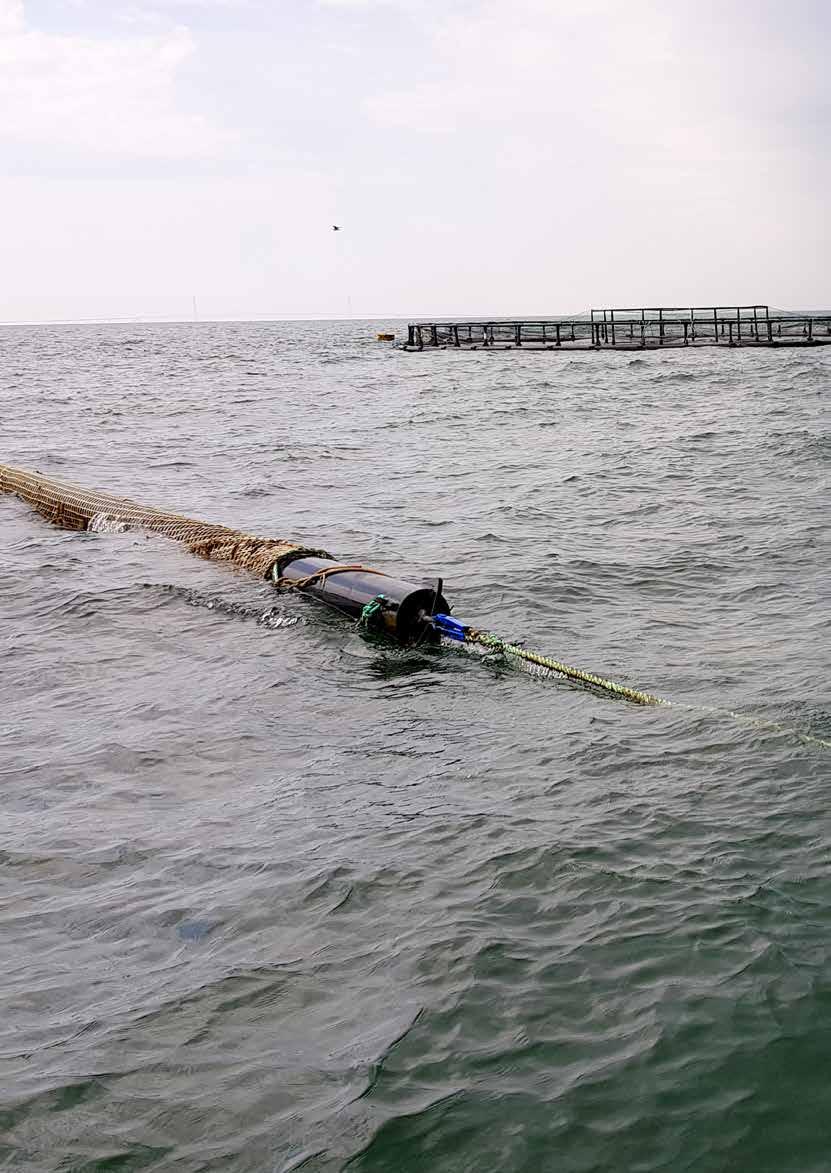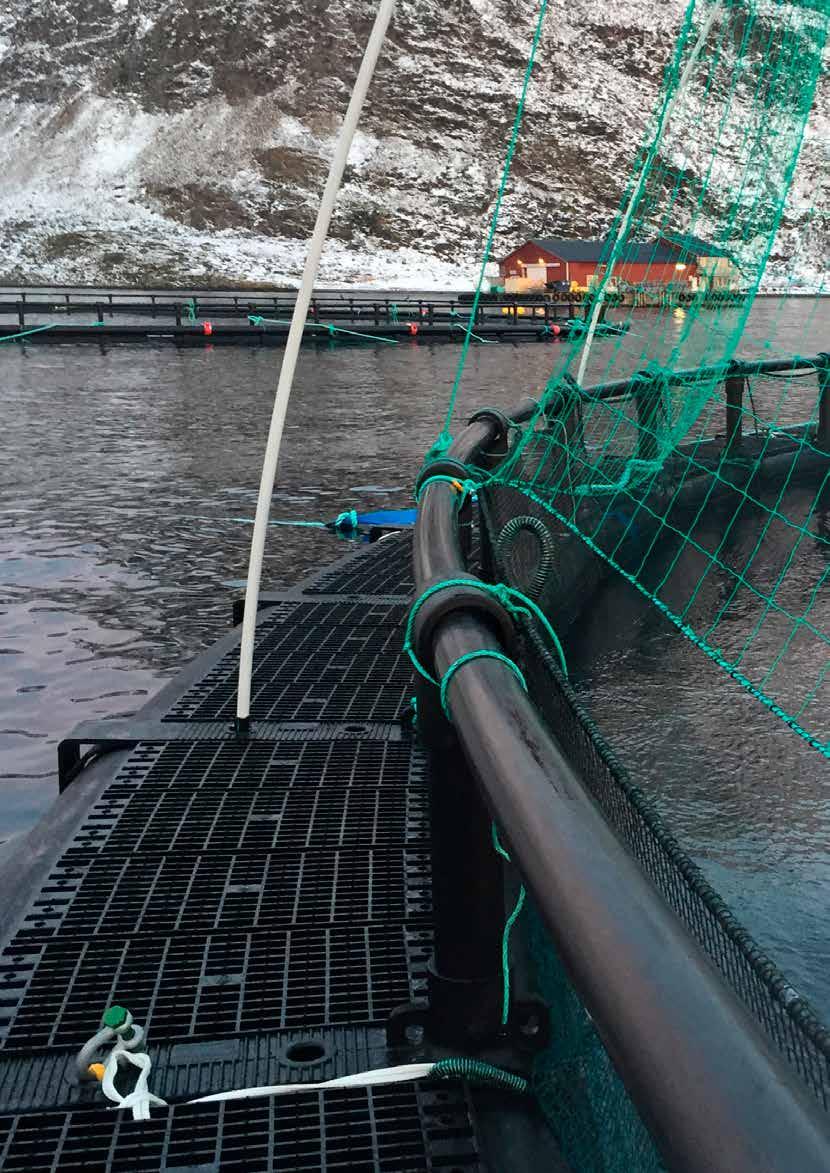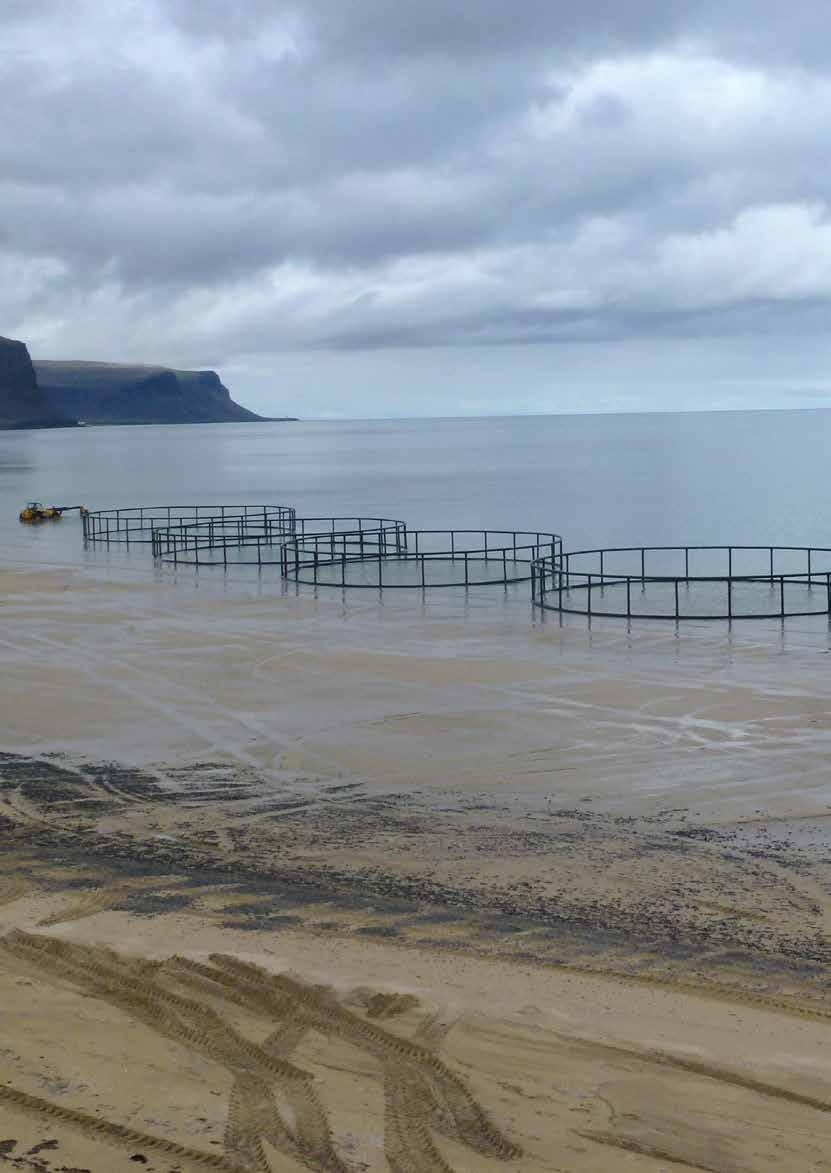
8 minute read
Cage Nets
by morenot
SALMON TROUT
Nets for Salmon & Trout
general Large salmon or trout pens with thousands of tons of fish must have excellent water flow through the cage to keep high oxygen level high. Low oxygen levels effects fish welfare and will in turn have a negative influence of feeding and growth.
Finding the right balance between mesh size and twine thickness is key to having as big a mesh opening as possible. This then needs to be aligned with the size of smolt being introduced into the net pens.
the nets Cage nets designed are in a way that means all stress and tension is absorbed by framing ropes rather than the netting. Carefully chosen materials that interact with each other to create a safe enclosure. A salmon or trout net is not an off the shelve product. Tweeking the mesh size to maximize the water flow while ensuring fish are not getting caught is one of the keys.
why dyneema® Why does Dyneema® make an excellent salmon/ trout net? You can keep the break load whilst drastically reduce twine size – or use the higher strength to upgrade break load without increasing volume/weight.
With a thinner twine – you delay the point where the net needs to be cleaned or replaced. You also reduce the amount of net coatings such as antifouling liquid needed to coat the net.
That alone can pay for the slight increase in cost of using Dyneema® over traditional materials as nylon and polyester. The reduction in weight for the fully assembled cage net with Dyneema® is more than 50%.
»Hvalpsund produces strong cage nets and we will never buy anything else than cage nets made with Dyneema® in the future«
// Höskuldur Steinarsson, General Manager Fjardalax, Iceland

FARMER CASE: FJARDALAX, ICELAND CERMAQ NORWAY AS REGION FINNMARK
Species: Atlantic salmon Annual production: 2,700 tons Atlantic SalmonSpecies: Cages: Cages: 20 cages 160 circumference 40 cages 160 meter HD500. Nets: – in grid mooring system 40 Dyneema® combi nets 160 and Nets: 22mmsq knotless Dyneema. 120 meter circumference - 33 meter 152 kg break load depth – a combination for both smolts and growouts. 220 kg breakload in 29mmsq and 154 kg in the 18mmsq smolt nets.
Kjetil Knutsen
Operation and Service Coordinator
Cermaq – a Mitsubishi fully owned subsidary – chose Hvalpsund as the backbone of the future pens and nets supplies with the signing for 15 HD500 Hvalpsund EXTREME pens and 15 combination nets in all Dyneema®. According to Cermaq there was a need for new inspiration in the Norwegian equipment industry and Hvalpsund ticked all the boxes for them. The HD500 pen features the widest walkway panels available in the market today on any circular HDPE pen. Combined with other innovative solutions such as double sinker tube sleeves and integrated mooring points the HD500 pen will not only serve Cermaq in many years to come. Supplied in combination with net pens in all Dyneema® it will be a true game changer.
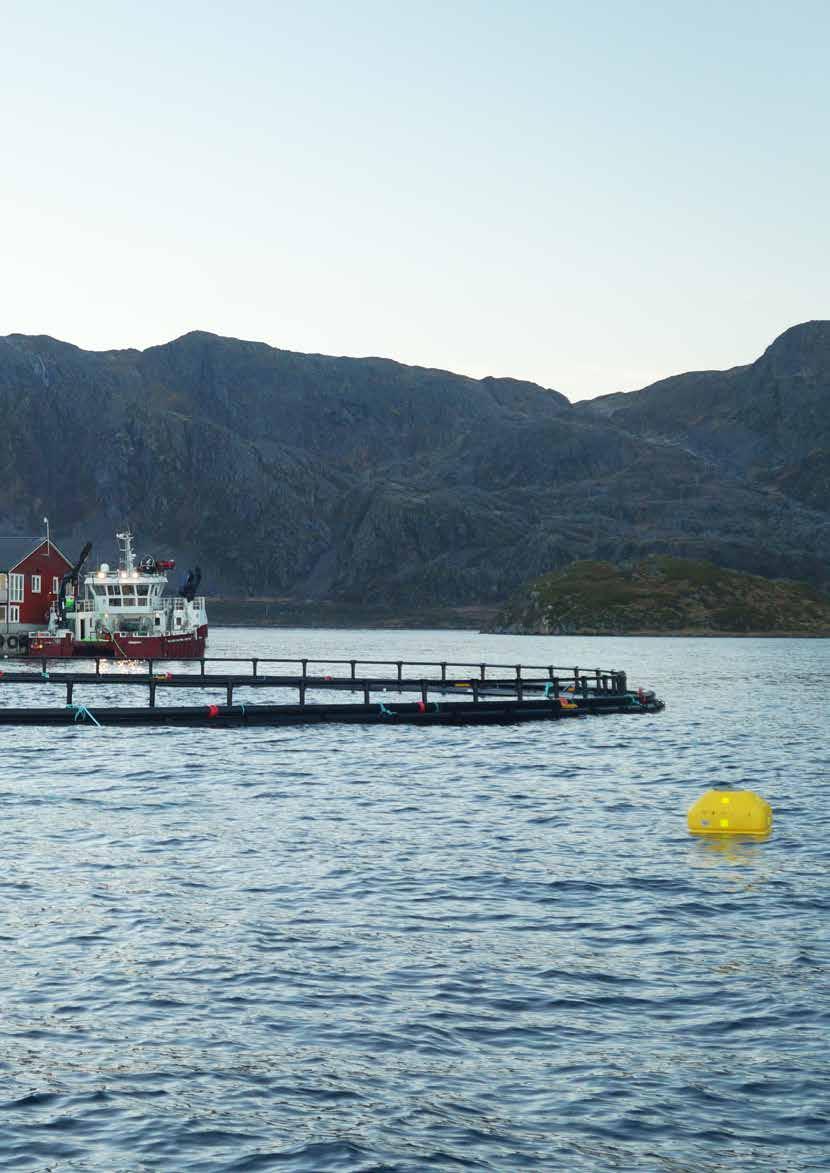
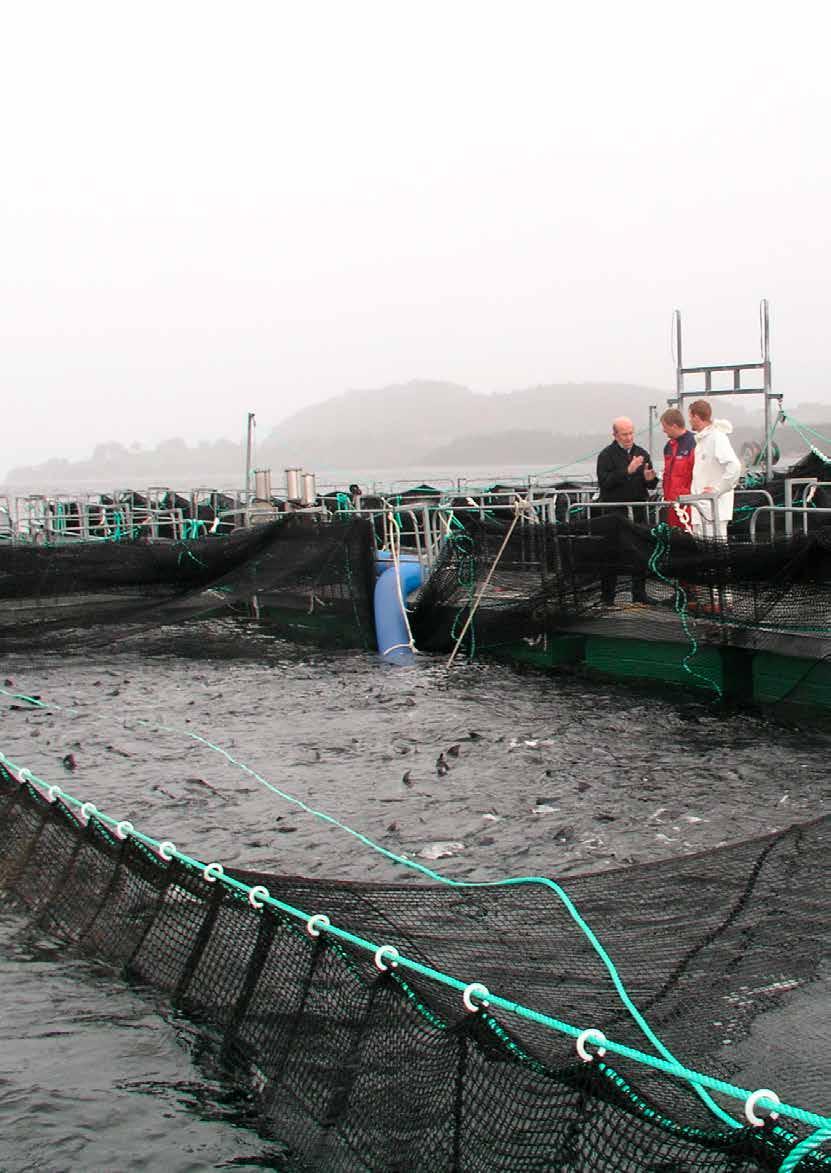
»The Dyneema® material is superior for cod farming because of the wear and tear and it resists the chewing from the cod. And it’s a light material to handle«
// Håvard Rogne, Atlantic Codfarmers AS
Nets for Cod
general Although the quantity of farmed cod is significantly smaller than that of Salmon – farmed cod is still an important contribution to the supply of high quality white fish. Cod are known to bite and chew on net, twine or rope that sticks out in the net pen. If something catches the attention of the cod it will systematically bite and chew on this. Today wild caught cod fish is being transferred to holding pens ashore and harvested as demand is there. This ensures a better and steadier supply of this excellent fish.
the nets One way to keep the inside of the net pens, made especially for cod, as uniform as possible is to make sure that only dark colored materials are being used. By using only dark colors the net, twine or rope are less likely to catch the attention of the fish. Just as important we make sure that no knots, loose twine or rope ends are sticking out on the inside of the net pens. Finally covering the fully assembled net pen in a dark resin that glues all fibers and filaments together is recommended. Covering the net pen with a resin makes it more difficult for the cod to bite and chew on the materials.
why dyneema® Why does Dyneema® make an excellent cage net for cod farming? The special properties of Dyneema® firbers - when it comes to superior abrasion resistance, light weight and ultra-high strength - makes it the perfect match. Cod farms are seeing significant reductions in holes and damages to the net, twine and rope related to fish bites after switching to Dyneema®.
The thin twine results in less fouling that closes meshes as well as it takes longer for the fouling to attach. That in turn ensures higher water flow and better oxygen levels which increases fish welfare and a leads to better FCR. Reduced service and logistic costs are elements that contribute to the fact that Dyneema® is an excellent choice for cod farmers.
COD
BREAM BASS
Nets for Bream & Bass
general As the Sea Bream is a predator fish they will bite and chew on items that stick out in the net. Sea Bream are notorious for aggressively trying to bite their way into freedom. Mostly because it is in their nature to chew on the twine, net or rope if it catches the fish’ attention. If they create a hole – some fish can escape as well as wild fish can enter into the pen feeding on the fish feed. Sea Bass on the other hand are seen escaping through even the smallest hole in the cage. More than the Sea Bream – Sea Bass will swim out of a hole in the net.
the nets Important to consider when constructing net pens for Sea Bream is to make sure that only dark colored materials are being used. By using only dark colors the net, twine or rope are less likely to catch the attention of the fish. Just as important we make sure that no knots, loose twine or rope ends are sticking out on the inside of the net pens. Finally the use of correct materials with sufficient strength and wear resistance is crucial. Sea Bream and Sea Bass are often farmed in pens between 60 and 90 mtr circumference. Covering the fully assembled net pen in a dark resin that glues all fibers and filaments together is recommended. The net pen coated with a resin makes it more difficult for the cod to bite and chew on the materials.
why dyneema® Why does Dyneema® make an excellent Sea Bream/ Sea Bass net? The very fact that Dyneema® is superior when it comes to abrasion resistance makes it the perfect match.Sea Bream farms report reduction in holes related to fish bites of more than 75-90% after switching to Dyneema®.
Sea Bream and Sea Bass farmers also state that the higher water flow coming from a thinner twine is giving better fish welfare and a better FCR. Reduced service and logistic costs are elements that contributes to the fact that the material of choice for Sea Bram and Sea Bass farms across the Mediterranean today is Dyneema®
»Nets with Dyneema® are really good for seabream production! The mesh is very strong and sewing by hand is important for increasing the net life! Nets with Dyneema® are very light and easy handling so that makes a good net for breeding other species too«
// Marc Frichou, Site Manager, Gloria Maris SAS

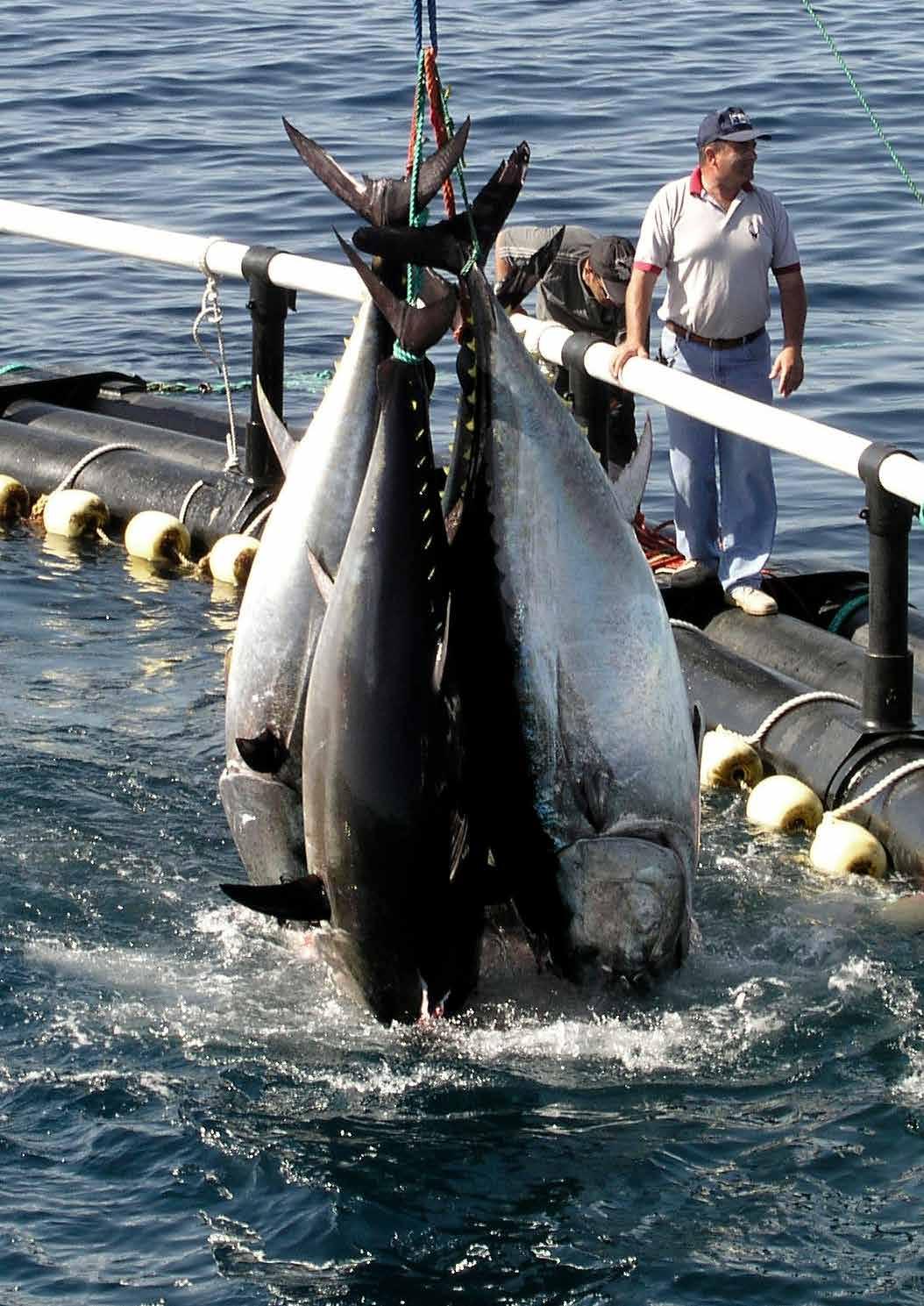
»We have been buying our nets from Hvalpsund for over 10 years. The quality is excellent, the service extremely efficient. Hvalpsund nets have been crucial to the success of our company«
// David Azzopardi, owner Fish & Fish Ltd. Malta
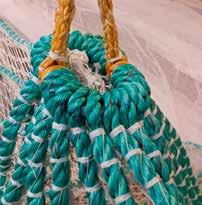

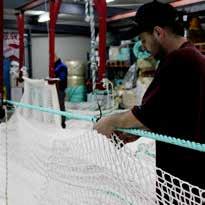
Nets for Tuna
general Tuna is in every aspect like no other farmed fish. The wild caught Tuna are gently towed from the fishing ground to the holding pens. After having been carefully transferred into the tuna pens these huge and incredibly beautiful fish are nursed for like few other species. Not only are the tuna a lot bigger than other farmed fish species, they are also very delicate and so need to be handled gently. Even small cuts or bruises can ultimately cause that the fish will not survive.
Weighing everything from 50 to 800 kg – even losing just “a few fish” is not an option. The tuna fish’ behavior inside the cage is circling around the net often following exactly the same path.
the nets Tuna fish are being kept in pens with a size a lot bigger than many other species. A typical pen size between 150 and 300 mtr circumference combined with the fact that tuna pens often are located in exposed offshore sites demands the ultimate equipment. The side walls of a tuna net must be kept straight not to catch onto the fins of the fish. With the size and weight of a tuna net surpassing e.g. Salmon or Sea Bream nets – special tools and machinery is needed for construction and handling of the nets. Hydraulic pulling tools makes the lashing in critical points stronger that any manual labor can do.
why dyneema® Towing of tuna pens are often done over great distances. For days the huge tuna pens are slowly being towed from the fish ground to the holding pens. Towing nets made with Dyneema® drastically reduces the drag forces coming from the net. The reduced drag forces lowers the fuel consumption and reduces cost of towing.
Further to that the lower drag forces in the net helps keep the residual volume in the net and the fish are less likely to get caught on the net panels.
TUNA

